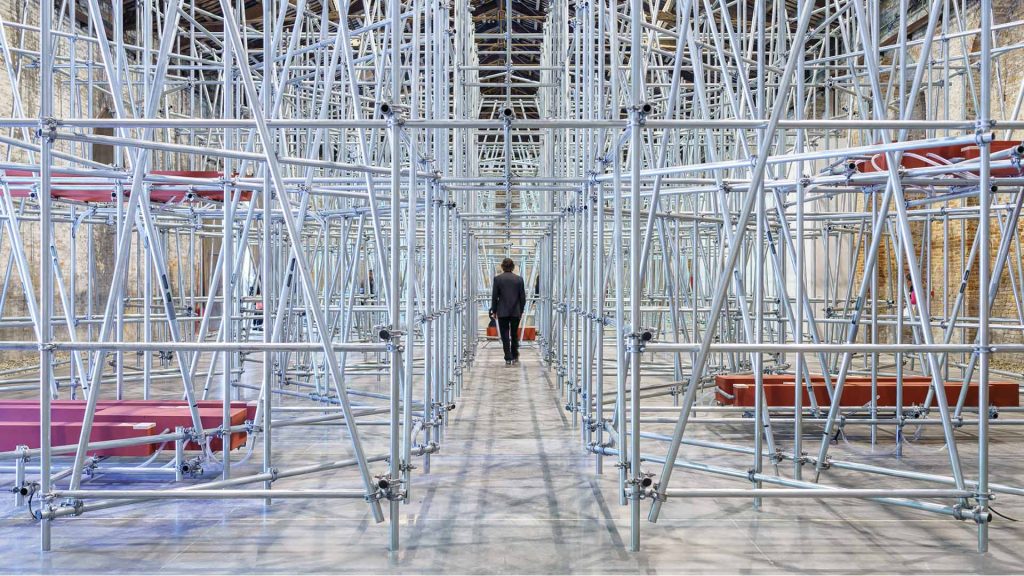
In the ‘sound cathedral’ designed by Massimo Bartolini for the Italian Pavilion, compositions by Caterina Barbieri also resonate. Barbieri was recently appointed as the head of the Music Biennale.
A visit at the Italian Pavilion exhibition is an immersive experience, a journey into listening we are cued in by its very title: Two Here – or to hear, as it were. Behind the installation is Massimo Bartolini, who reshaped the spaces at Arsenale into a sort of labyrinth-like cathedral divided in three, showing a frame of scaffold tubes that remind of organ pipes, and in fact come to life as a melody in A- begins sounding off and accompanies us into a journey of knowledge.
Thanks to a decade-long collaboration with art critic Luca Cerizza, Bartolini has reimagined these spaces as a kind of labyrinthine, tripartite cathedral; the central scaffold structure becomes a sounding, speaking metaphor through a forest of standard scaffolding pipes transformed into an organ—seemingly cold and static, yet brought to life by sounds emitted in an ongoing A-flat melody composed by Caterina Barbieri and Kali Malone, young talents of an electronic and experimental genre. This journey toward knowledge, as Bartolini explains, is one where “listening” is a tool for self-improvement in the world. Because it is an experiential journey, it can be perceived in the contemplative silence before the small bronze sculpture placed atop a very tall organ pipe, representing a Pensive Bodhisattva, a solitary Buddha statue in an almost empty room. This figure symbolizes a form of Buddhism that does not act but thinks, that has achieved enlightenment and invites the listener to experience the sounds produced by the organ, creating a suspended time, a moment of waiting that guides the viewer toward the center of the pathway, leading to the circular pool. This hypnotic pool contains a pulsating wave that induces a sensory trance, and its shifting form seems to evoke the movement of life. A modern, minimalist reimagining of the baroque fountain—once the central gathering point in old town squares—this pool contrasts with the forest, a symbol of solitude. Exiting the labyrinth opens onto the Giardino delle Vergini, where a three-voice choir, bells, and vibraphone, composed by Gavin Bryars along with his son Yuri, sings, inspired by the words of Argentine poet Roberto Juarroz. The piece tells of a human who, after a transformation, has become a tree, sharing an osmotic, almost pan-like connection with everything around it, connecting to the world through its roots. As Cerizza explains, the apparent stillness of the Bodhisattva becomes a heightened form of listening and connection. Three spaces offer three different acoustic experiences, where even silence becomes a voice aimed at the mind.
In line with the overarching theme proposed by curator Adriano Pedrosa, Foreigners Everywhere, Bartolini’s interpretation aligns perfectly with the idea of not being a stranger or foreigner to others, starting with first being at home within oneself.